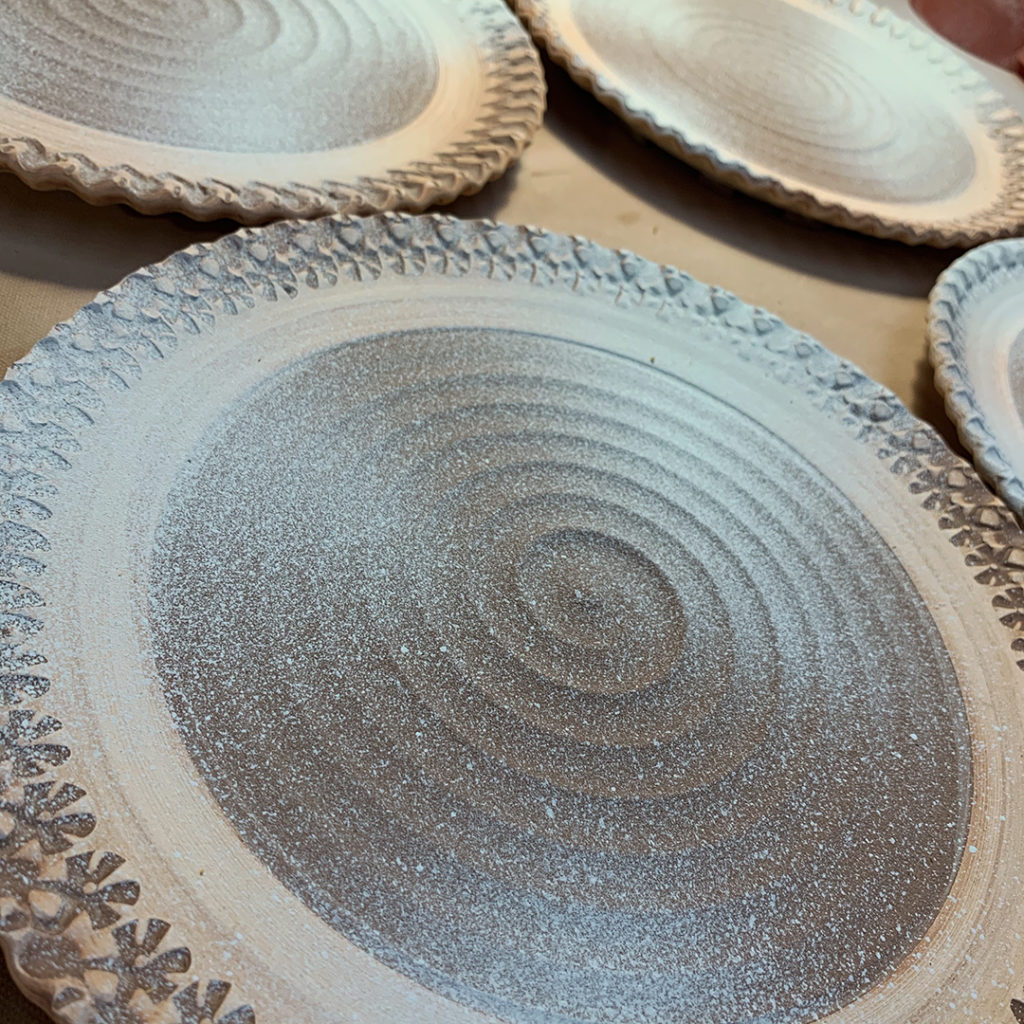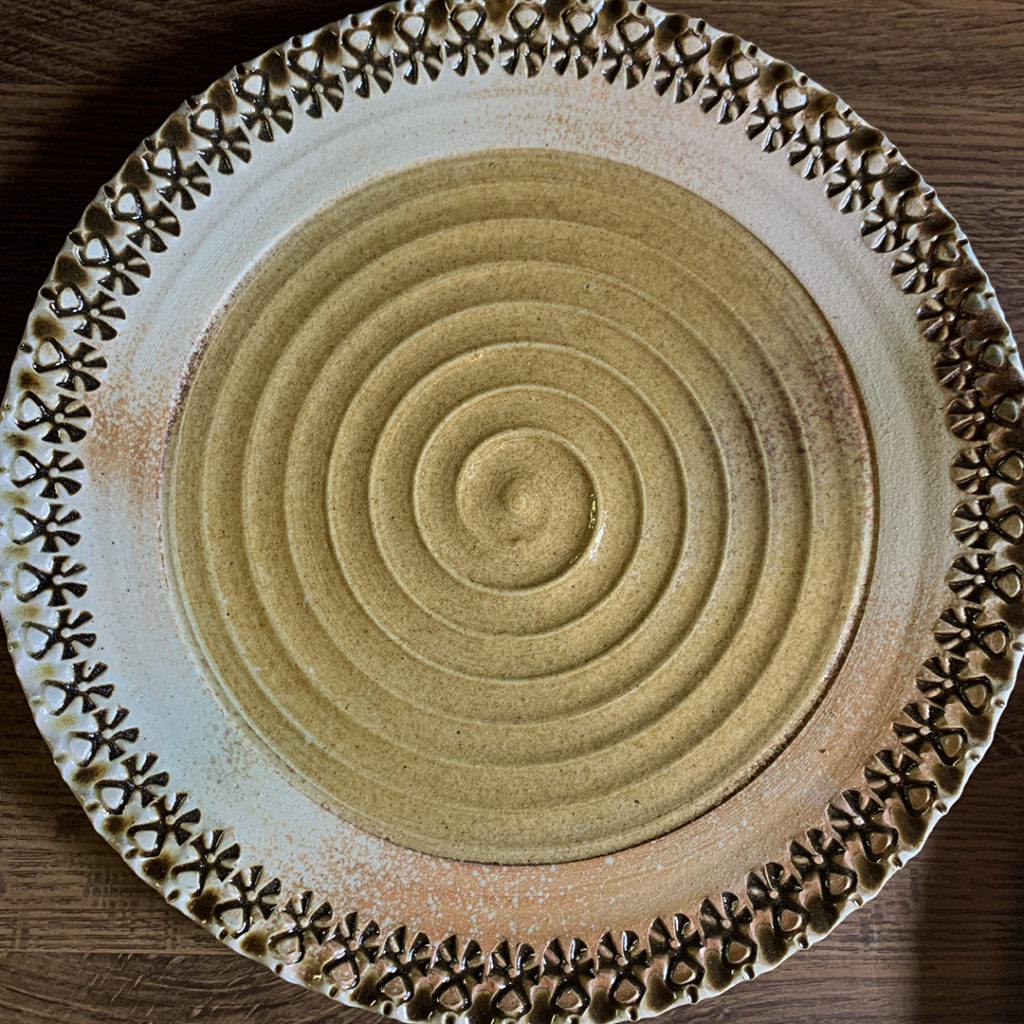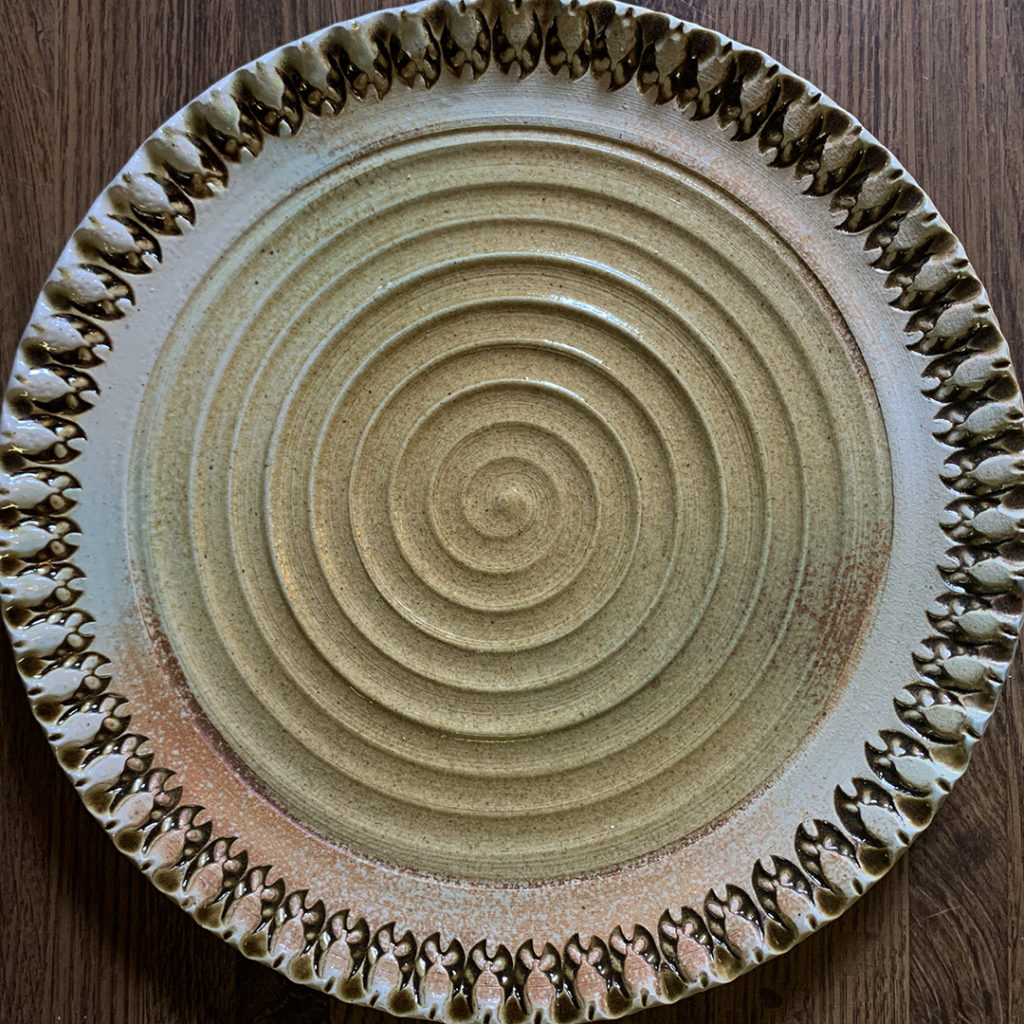And now… finally...
Christmas “secrets projects” can be revealed!!!
So I got a request for a “special order” to make a set of four soda-fired dinner plates. They were to be for some very good friends of mine… actually, my VERY FIRST art fair friends ever!!! They wanted four dinner plates that were very “neutral” so that any of their other more colorful pottery pieces would still work along with them. When I took the order, I made sure to mention that I don’t make a lot of soda-fired plates as there’s a larger propensity for them to warp during the firing. I also explained the inherent randomness of soda-firing… which they are fully aware of as they have quite a collection of my work!
So I made their dinner plates… taking extra caution to compress them really well, make sure they’re not over-worked, and very careful not to pick them up in a way that might warp them. They had asked for four “matching” plates that each had a different stamp pattern. They looked great after the bisque firing, so I glazed them for my latest soda-firing. I even made sure to us a LOT of wadding under the plate… probably double what one would normally use!
Here they are glazed… with a tenmoku inlay into the stamped impressions. A thin spray of tenmoku in the center area which should turn an “neutral” amber color… and a very light spray of a green glaze for a bit of a subtle random accent.


And then it was time to soda-fire them. So I placed them towards the back of the kiln. Making sure that they were placed on NEW flat kiln shelves! I was confident that these plates were going to work out… as they’re a commission order for very special friends!!!
When I unloaded the kiln, I was very excited about the “neutral-ness” of the plates! They’re going to LOVE them… as Rosene’s favorite color is BEIGE!!! Which I keep advising her that BEIGE is indeed NOT a color!!!
And here they are… the four “matching” dinner plates each with a different stamp pattern! With very subtle accents… and yet very “neutral.”





Again, the GOAL was a set of dinner plates… very neutral…
each with a different stamped texture!

After they came out of the kiln, as I was stacking & packing up the pieces… only then did I notice that TWO of plates were perfectly flat… while the other two were not!!! Two of the plates were warped terribly!!!
Ugh…. WARPED!!!
As these were a SET OF FOUR… two warped and two flat were not going to work for me!! I was going to need to make some replacements VERY QUICKLY… so they would be ready for Christmas!!!
Thanks for posting. I asked ? On FB, and then read the blog. You Answered & I am amazed at your technique.
So I don’t see the warped -ness , should I be able to? Also, after all this time I should know what soda firing is, but I guess I don’t. How is that different than the other kind (which I don’t know the name if)?
HEY KATHY – You’re too funny!!!
And no, you wouldn’t really be able to see the warping from the top down. If I showed them from the side profile, you would see it more clearly. The most obvious sign is that when you set them down on the table, they kinda rock back & forth. They wobble every time you touch them!!! Not sitting flat to the table… NO BUENO!!!
As for “soda-firing”… here is your quick tutorial overview. Most regular firings you dip the pot in glaze, fire to a set temperature, and it’s all pretty consistent time after time… relatively. With soda-firing, when the kiln gets close to its top temperature of 2300-degrees, I insert a mixture of soda ash, soda bicarbonate, whiting & damp woodchips into the kiln. The flames make the mixture combust and the soda-filled vapors fly around inside the kiln. Wherever the flames hit the pot, they leave a “soda-glaze” residue on that part of the pot. Most soda-fired pots have a liner glaze in the inside, and minimal glaze on the outside. All of the finished shiny “glaze” surface and the flashing randomness of colors is caused by the soda firing process with those vapors. If you look closely at a soda-fired pot, you can usually tell which side was facing the flames, and which side was facing the back where less soda was deposited onto the pot. Because this soda-rich vapor environment creates the glazed surface on the pots, you also run the risk of it glaze-fusing you pieces to the kiln shelf if it were to build-up along the bottom of your pots. Therefore, every piece, every pot, every ornament, every tile gets a piece of “wadding” attached to the bottom. Wadding is a soda-resistant “clay” that we make with alumina hydrate. The pots are “lifted” off the kiln shelves with these little wadding balls. Most smaller pieces have three wads, while larger pieces will get a lot more. I think the problem with my plates was that when they shrunk during the firing, part of the plate shrunk right off the wads on one side… and therefore that side was not supported and then slumped down a bit during the firing. Mwah, mwah, mwah…
So there’s you pottery & chemistry lesson all in one.
Does that make a bit more sense now???
Hope you had a great holiday Kathy!
And we’re all hoping for a better New Year!!!